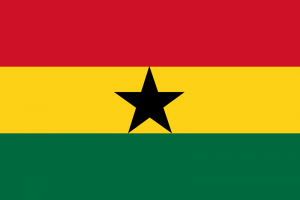Language/Twi/Vocabulary/Eating-and-Drinking
Eating and drinking are essential activities that we engage in every day. As a beginner in learning Twi, it's crucial to understand the vocabulary related to eating and drinking, such as tableware, utensils, and beverages, to communicate effectively in everyday situations. This lesson will provide you with the necessary Twi expressions, phrases, and vocabulary related to eating and drinking, including cultural information and interesting facts.
Twi Vocabulary for Eating and Drinking
Tableware and Utensils
When you sit down to eat or drink, you will need to use tableware and utensils to serve and enjoy your food and beverages. Here are some of the most common Twi words for tableware and utensils:
| Twi | Pronunciation | English |
|---|---|---|
| ampesi | plate | |
| adepa | bowl | |
| nkwannua | spoon | |
| adwene | fork | |
| akwantuo | knife | |
| nhweɛma | chopsticks | |
| asɛm | glass | |
| nsa | cup | |
| anwaso | teapot |
- Ampesi - This is the Twi name for a plate. Some of the most typical foods you will find on a plate include fufu, banku, or kenkey.
- Adepa - This is the Twi name for a bowl, which is popular for serving soup or any liquid-based food.
- Nkwannua - If you want to eat a bowl of soup, you will need a spoon to ladle it into your mouth. Nkwannua is the Twi name for a spoon.
- Adwene- When you need to eat solid foods, such as chicken, rice, or fish, use a fork. Adwene is the Twi name for a fork.
- Akwantuo - A sharp knife would be useful to slice through meats, fish, and vegetables. In Twi, a knife is called "akwantuo."
- Nhweɛma - Chopsticks might not be typical tableware in the Twi culture, but you can still find them in modern restaurants in Ghana. In Twi, chopsticks are called "nhweɛma."
- Asɛm - If you want to drink a refreshing glass of water or soda at a restaurant, say "asɛm" to order a glass.
- Nsa - In Ghana, tea and coffee are commonly drunk from small cups called "nsa."
- Anwaso - Ghana is known for its herbal teas, and "anwaso" is the Twi name for teapot. It's used to brew herbal tea or other types of plant-based infusions.
Beverages and Drinks
In Ghana, people drink a wide variety of beverages and drinks to stay hydrated and refreshed. Here are the most common Twi words for beverages and drinks:
| Twi | Pronunciation | English |
|---|---|---|
| nkuto | water | |
| aseda | juice | |
| aponkye nkrakra | beer | |
| komkom | rum | |
| nnwom | wine | |
| nkatie burger | coke | |
| asana | milk | |
| sagya | tea |
- Nkuto - Water is the primary beverage of choice to stay hydrated in Ghana. In Twi, water is called "nkuto."
- Aseda - One of the other most popular beverages in Ghana is juice. Aseda is the Twi name for juice.
- Aponkye Nkrakra - If you're looking for an alcoholic beverage, you might want to try "aponkye nkrakra," which is beer in Twi.
- Komkom - Rum is a popular beverage in Ghana, particularly during festive occasions. In Twi, rum is called "komkom."
- Nnwom - Ghana is known for its palm wine, which is also dubbed Nnwom in Twi. The wine is fermented from sap extracted from different species of palm trees.
- Nkatie Burger - This is the Twi name for coke or soda, a favorite drink among children and adults alike.
- Asana - Milk is a healthy beverage, and in Ghana, you will find different varieties of milk, including cow milk and coconut milk. In Twi, milk is called "asana."
- Sagya - Twi people love tea, and most people drink it daily. Tea in Twi is called "sagya" and is best served with evaporated or condensed milk.
Phrases for Eating and Drinking
When you're trying to communicate with someone during a meal or drink, these common Twi phrases will come in handy:
- Mema nkuto - Please give me water.
- Mebi adwene - I need a fork.
- Medo anwaso - Please bring a teapot.
- Metumi nsa asɛm - I want a glass of soda.
- Menkaase asɛm - Please refill my glass.
- Memia nnwom - I want wine.
- Mefuto asana - I need milk.
- Mede sagya - I want tea.
Interesting Facts
- In Ghana, it's common to eat with hands, particularly when you're eating local dishes like fufu, banku, and kenkey. It's believed that using hands to eat provides a more authentic experience of local cuisine.
- During festive seasons or special events like weddings, funerals, or religious observations, it's typical for people to share drinks using the same cup or glass. This practice is called "pouring libation," and it's considered a display of unity, honor, and humility.
- Baobab is a popular fruit in Ghana, and it's used to make a refreshing drink called "bissap." The drink is bright red, tart, and served cold with sugar syrup.
Conclusion
Eating and drinking are significant cultural activities in Ghana, and Twi learners must understand the vocabulary related to these activities to interact and communicate effectively with native speakers. In this lesson, we've covered the most common Twi words for tableware, utensils, beverages, and drinks, as well as phrases that will help you order or request food and drinks efficiently. Keep practicing, and you'll be on your way to mastering Twi!

